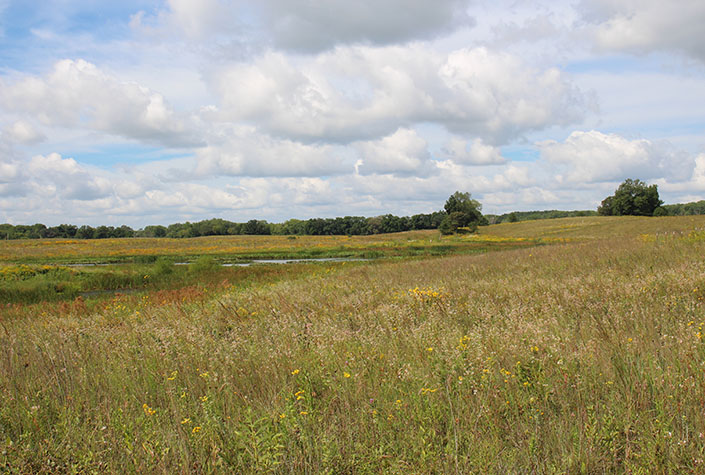Sustainable rangeland health

Credit: Tracy Immordino/shutterstock.com
Texas A&M AgriLife researchers are looking at a one-two punch to restore rangeland health and support sustainable livestock production today.
Historically, human-made and naturally occurring fires shaped the prairie landscapes and the movement and habits of grazing animals such as bison and pronghorn across the Great Plains. In turn, the successional patchwork of prairie vegetation promoted diverse habitat for birds and wildlife and provided nutrient-dense forage for grazing animals.
“Historically, much of the Great Plains rangelands were far more open with pockets of wooded areas,” said Dr. Ben Wu, professor in the Texas A&M College of Agriculture and Life Sciences Department of Ecology and Conservation Biology. “But there has been a huge change in the landscape due to woody plant encroachment associated with changing land management practices and weather patterns.”
Wu said these changes have resulted in a loss of ecosystem services including biodiversity and quality forage for livestock production.
“If you don’t have grasses, you don’t have a forage — that’s a big deal for ranchers,” Wu said. “Mechanical and chemical control have been used in an attempt to control woody encroachment, but these methods are expensive and not sustainable.”
Now, thanks to a $1.5 million grant from the U.S. Department of Agriculture National Institute of Food and Agriculture, Wu and colleagues in the Department of Rangeland, Wildlife and Fisheries Management will implement a five-year collaborative effort with USDA Climate Hubs and others to promote the use of more sustainable, cost-effective agricultural practices to restore rangeland health and benefit livestock production across the Great Plains.
Collectively, these and other land management exercises that benefit ecosystem health, mitigate impacts of climatic change and improve overall operational resiliency are referred to by the USDA as “climate-smart” practices.
An integrated approach
The new grant will build upon the framework of the USDA-funded Prairie Project, a collaboration of research, teaching and extension faculty from Texas A&M University, Oklahoma State University and the University of Nebraska.
“We have had such great experiences working with educators, extension and natural resource professionals with the Prairie Project that it was a natural fit to take on this new project together while also incorporating new partners,” said Dr. Morgan Treadwell, Texas A&M AgriLife Extension Service range specialist and associate professor in the Department of Rangeland, Wildlife and Fisheries Management, San Angelo.
Over the past five years, members of the Prairie Project partnered with ranchers, academics, extension faculty and students across the Great Plains to conduct research, share knowledge and address threats affecting ecosystem health and livestock production.
Through this process, research has shown that when used together, two specific management practices deliver a one-two punch in the battle to maintain rangeland health – prescribed burns and mixed-animal grazing, also known as pyric herbivory.
“Emerging research has shown that agricultural practices such as pyric herbivory and mixed-species grazing are effective at reducing the risks and impacts of drought, wildfire and woody plant encroachment,” Wu said.
While livestock like goats browse and help suppress woody vegetation, cattle benefit from the nutrient-dense forage that resprouts after a burn.
“Through fire, we’re able to make woody plants more palatable to browsing animals such as goats,” Treadwell said. “This is due in large part to how fire affects the levels of tannins and phytochemicals present in the plants.”

